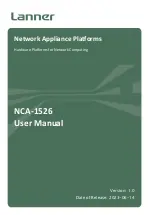
Device Configuration
Advanced Setup
– NAT (Virtual Server)
70
BEC MX-200 User Manual
Examples of well-known and registered port numbers are shown below. For further information, please
see IANA’s website at
http://www.iana.org/assignments/port-numbers
Well-known and Registered Ports
Port Number
Protocol
Description
21
TCP
FTP Control
22
TCP & UDP
SSH Remote Login Protocol
23
TCP
Telnet
25
TCP
SMTP (Simple Mail Transfer Protocol)
53
TCP & UDP
DNS (Domain Name Server)
69
UDP
TFTP (Trivial File Transfer Protocol)
80
TCP
World Wide Web HTTP
110
TCP
POP3 (Post Office Protocol Version 3)
443
TCP & UDP
HTTPS
1503
TCP
T.120
1720
TCP
H.323
7070
UDP
RealAudio
Using port forwarding does have security implications, as outside users will
be able to connect to PCs on your network. For this reason you are advised
to use specific Virtual Server entries just for the ports your application
requires, instead of using DMZ. As doing so will result in all connections from
the WAN attempt to access to your public IP of the DMZ PC specified
.
If you have disabled the NAT option in the WAN-ISP section, the Virtual
Server function will hence be invalid.
If the DHCP server option is enabled, you have to be very careful in
assigning the IP addresses of the virtual servers in order to avoid conflicts.
The easiest way of configuring Virtual Servers is to manually assign static IP
address to each virtual server PC, with an address that does not fall into the
range of IP addresses that are to be issued by the DHCP server. You can
configure the virtual server IP address manually, but it must still be in the
same subnet as the router.
Attention
















































